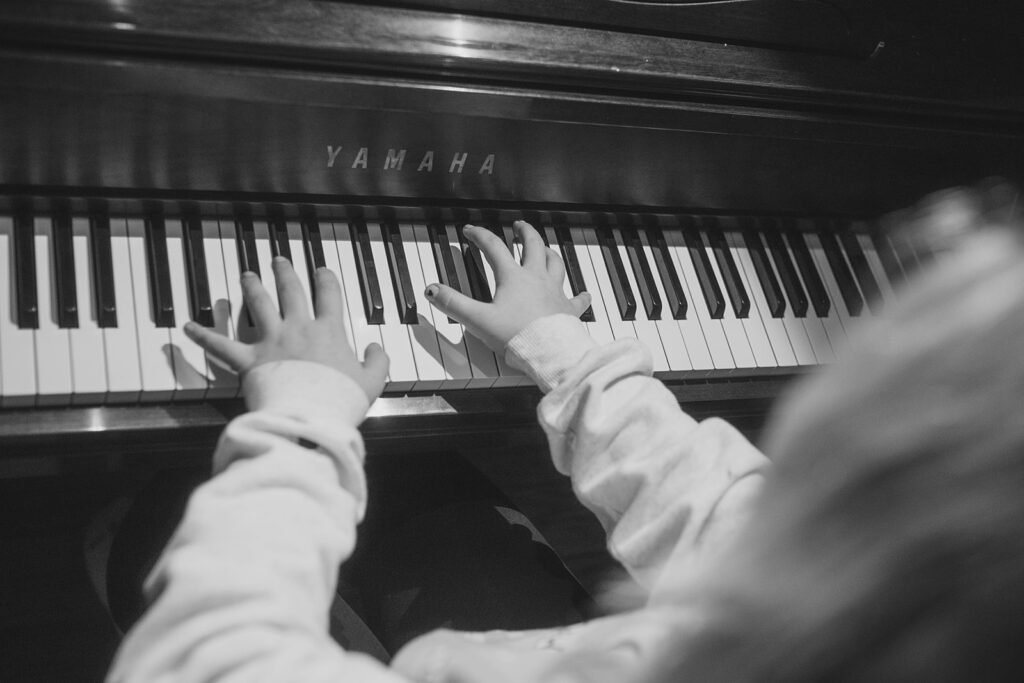
The following tools will create a more comfortable and productive place for students to practice.
1. Piano or full-length digital piano. An acoustic piano is the best keyboard option for building technique and expression. It should be tuned once or twice a year, depending on how quickly it falls out of tune. The keys should all work properly (no keys sticking or missing the tops). (Note: we do not want to put letter stickers on the keys. This isn’t helpful for learning note names.)
A digital piano (or a keyboard) should be full-length (88 keys) and have weighted keys that simulate the weight of a piano key. It should be on a stand that allows a student to sit underneath it, and there should be a real-feel sustain pedal plugged into it. The music stand should be able to hold an open piano book – the sturdier the better. If you begin lessons with a keyboard, and the student enjoys taking lessons, an acoustic piano would be a great step to take.
2. Sufficient lighting. Comfortable lighting for playing won’t be too bright but will allow the student to easily read the music.
3. Pencils at the piano. Students should always have a pencil or two ready at the piano, to write comments in their music or record time in their practice record.
4. Music storage. Some students like to store their music in the piano bench, and others have a basket near the piano to store their music. Shelving next to the piano works, too.
5. Metronome. A simple handheld version is the best metronome option for elementary students. Metronome apps are popular and are good options for older students who have their own phone or tablet. If a student is using a device for their metronome, be sure that it’s easily accessible, for example, not on a device that is often not charged, is lost (or hidden, ha), or is being used by another family member. However, devices can often be distracting, so a simple metronome may be best for focus.
6. Bench (with cushion and/or step stool). Please check that the bench can be pulled out to a distance that the student can stand between the piano and the bench without their legs touching either one. They should sit on the front edge of the bench. When they sit at the piano, if their feet can’t touch the floor, it’s ideal for their feet to rest comfortably on a step stool, so that they aren’t sliding off the bench. Also, if when they rest their hands on the keyboard, their elbows are significantly lower than their hands, they should have a book or firm cushion to raise the seat a bit.
7. Clock or a timer. A limitation of the time helps students to feel that practice doesn’t have to last forever – but a short amount of focused time can be very beneficial. The amount of appropriate practice time will depend on their age and their playing experience.
8. Humidifier and dehumidifier. Or, an installed heater on the piano. For those with acoustic (read: wooden) instruments, these tools will be enormously helpful in keeping a piano in tune, and will lessen any issues with additional key sounds, like new squeaks and clicks. Controlling the humidity level will also help with the ease of using a pedal, which can get squeaky with the wrong level of humidity. In the summer, use a dehumidifier near your piano, or use your installed piano heater. In the winter, use a humidifier to keep the piano’s mechanics comfortable. An improved sound on your instrument will translate to a more satisfying experience for the player.